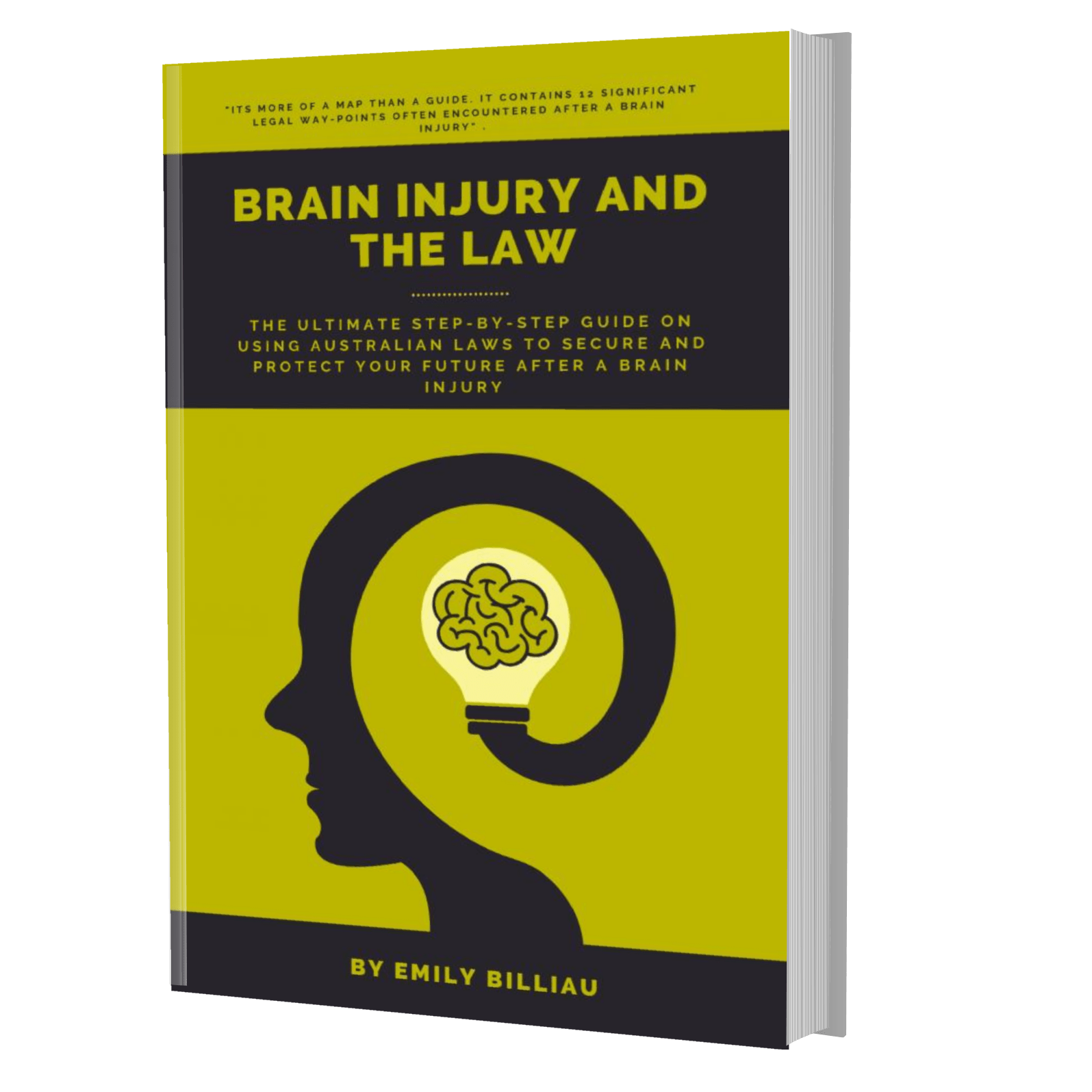
Sign Up below
and get instant access to our guide.
You will get instructions on how to get into the The Briefing Room after you hit the button above!

This guide is the ultimate planning tool to secure your financial future after a brain injury. You will be meticulously guided through 13 areas where the legal system can have a massive impact on your quality of life.
Here's a taster of 1 area - Compensation.

Written by Emily Billiau
Contact Emily on (07) 3014 6590
The reason for this is compensation can, and will, take care of the costs associated with multiple stages of this guide, saving you time and effort going through every step.
Just as a cable car can take you up some sections of a mountain, saving you from the hike, so too can compensation make the journey after a brain injury much easier.
But, what is compensation and how do I know if I qualify?
Compensation is merely the thing (typically money) which is given to someone in recognition of their loss, suffering, or injury.
DEFINITION: compensation
Compensation is merely the thing (typically money) which is given to someone in recognition of their loss, suffering, or injury.
Basic examples of compensation within a job setting include salary, commission, overtime pay, travel/meal/housing allowance – among others.
Compensation in reference to brain injuries generally refers to two avenues: public and civil.
Public compensation accounts for schemes under the government that are readily available for anyone who meets the eligibility requirements.
These eligibility requirements are generally means tested and based on the severity of your brain injury.
This is opposed to civil compensation which is generally routed in the incident that caused the brain injury.
Regardless, both types of compensation can work in tandem to create better outcomes for those living with brain injuries.
One of the key avenues for public compensation is the National Disability Insurance Scheme – or as most Australians know it, the NDIS.


Get all 13-Stages and 6 downloadable resources by signing up for the complete guide. All it takes is 1 minute!

The NDIS is a nationwide, no-fault insurance scheme designed to protect and enhance the lives of those with disabilities. It assists with funding for things such as:
And much more.
NDIS benefits are normally paid incrementally, meaning in periodical installments such as weekly or fortnightly.

Civil compensation is delivered in a lump sum payment, and will take into consideration everything a public scheme does, plus vital aspects like lost income (Stage 11).
It is also generally dealt with on a state government level, meaning rules, restrictions, benefits, and wording will vary slightly from state to state.
Under the compensable schemes of each state, you can claim for a myriad of losses.
Generally, for personal injury claims, these losses are classified as ‘heads of damage’ and can cover:
These heads of damage cover every day needs such as:
In fact, these heads of damage will cover a lot of the stages and waypoints in this guide so it’s important to take this into consideration when reading the guide.
Common examples of injuries that might be compensable include (but are not limited to):
Now that you know the two main types of compensation, you can move onto Waypoint 2A.

To recover your costs incurred from the brain injury, simply:
APPLYING FOR PUBLIC COMPENSATION
If you are not eligible, you should consider other routes such as Total and Permanent Disability cover (TPD), workers’ compensation insurance, compulsory third party insurance schemes, personal accident insurance, and public liability insurance schemes.
In all instances, you should also check your eligibility for civil compensation as well – you can, in fact, claim under both (depending on your circumstances).

Before applying for civil compensation, you’re going to need to check eligibility first.
When checking your eligibility for civil compensation, we are generally referring to compensation available under personal injury law (car accidents, slips and falls, etc.)
In any other case, such as a criminal attack, you should contact Emily Billiau on (07) 3014 6590 to discuss your options.
APPLYING FOR CIVIL COMPENSATION
1. Eligibility
To qualify for personal injury compensation, you generally need to fulfil all three of the following criteria:
Whether or not you were at fault depends on your state and the scheme under which you are claiming.
Queensland, for example, has a fault-based compulsory third party (CTP) insurance system whereby the driver claiming must not have caused the accident.
New South Wales, on the other hand, has a no-fault system whereby the driver at fault could also be eligible for compensation.
In any situation, a driver identified as being ‘partially at-fault’ could still be eligible to claim for compensation. In any instance where you are unsure, you should contact Emily Billiau on (07) 3014 6590 to discuss your chances.
2. Determine who has been Impacted
Civil litigation, or personal injury claims, are not solely available to the person who’s now living with a brain injury.
The accident could have involved other passengers, should it have been in a motor vehicle.
The accident could have had witnesses.
And the accident could have taken away the breadwinner or carer of the family, meaning any dependent children, siblings, etc. could make a claim as well.
You should list out anyone who has been directly or indirectly impacted by the accident, and to what extent, before approaching a solicitor.
3. Approach a solicitor
Brain injuries are a complex topic and can often involve 6-figure payouts. In any instance, you are advised to receive initial advice from Emily Billiau on (07) 3014 6590 to discuss your options and your next step.

Compensation is a sprint to the finish line.
That is, claims for compensation have strict time limitations, particularly in civil compensation.
Just as spending too long on a mountain could result in tragedy, so could leaving a claim for too long.
The time limitations will vary greatly depending on the accident, the circumstances surrounding the accident, and the state and subsequent legislation you are claiming under.
By contacting Emily Billiau today, you could protect your rights to claim for compensation and be certain you don’t miss any important deadlines.


Get all 13-Stages and 6 downloadable resources by signing up for the complete guide. All it takes is 1 minute!